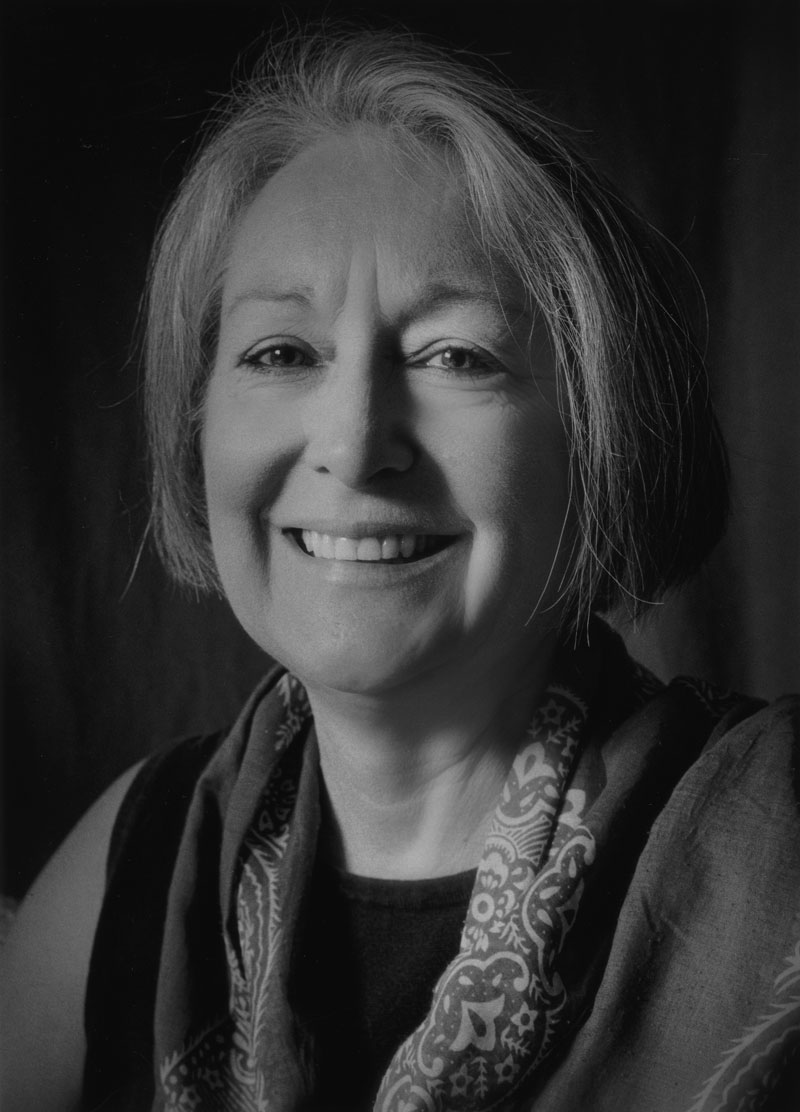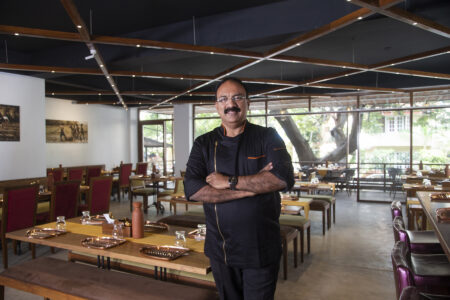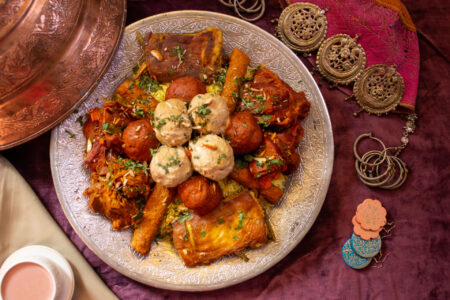Erin Ryan White brings 33 years of experience to her job as sommelier at August, Chef John Besh’s New Orleans restaurant. Having expanded her knowledge working at two wine bars, jobs that allowed opportunities for extensive tasting, she then moved to the Windsor Court Hotel as sommelier where, in 1993, she won a James Beard Foundation nomination for Outstanding Wine Service. White then worked with Emeril Lagasse, directing his wine program at his flagship restaurant, Emeril’s. After a spell as a wine buyer in retail, she returned to New Orleans to join the award-winning Chef John Besh.
At August, John Besh, who won the James Beard Foundation Award for Best Chef in the Southeast, serves his signature Louisiana influenced, contemporary French cuisine. White brings her highly approachable and informed style to pairing wines from a cellar that has put August on Wine Enthusiast’s ‘America’s 100 Best Wine Restaurants.
August, 301, Tchoupitoulas Street, New Orleans
Kaveri Ponnapa: What brought you to the world of wine?
Erin Ryan White: It has all of the things I like wrapped into one. It has the beauty of color and fragrance, flavors and energy. Like all art, it makes you feel. All wine has something to say. Some you may not enjoy the experience, some may be heaven in a glass. It is never boring because it changes every year. It can be a history lesson or you can close your eyes and travel via your senses. A deep sniff of a Barolo and you are back in northern Italy.
KP: August is featured on Wine Enthusiast’s list of America’s Best 100 Wine Restaurants -how have you influenced the selections?
ERW: The list is definitely more French than any other country. Bordeaux can be a bit big so there are only four selections. We have a diverse wine list but the sheer number of selections in certain regions suggests what I think pairs with our menu. Our menu is Contemporary French so Burgundy is favored and Sauvignon Blanc tends to be from the Loire Valley and not New Zealand. I love New Zealand Sauvignon Blanc but it is not as subtle by intention. Pinot Noir choices outnumber other reds. Most styles are represented but some regions have only one or two selections. It is a subtle but effective way to influence selection.
KP: You have a significant by the glass selection. How do you direct this to your advantage and to that of your guests?
ERW: This is particularly relevant to our readers in India, where the wine culture is less than two decades old. Many people are eager to experiment, but also hesitant, slightly intimidated, and also cost conscious.
My open bottles are tools. I can sell a glass with the first course of seafood and a bottle with the main course. All dishes on the menu have a glass pairing. We can do a personalized pairing for you with whatever you choose to eat. We have a better profit margin on wine by the glass, which makes it worth the effort. The guest spends the same money as if buying a bottle but may get four or five different wines to try. It is more interactive with the staff, if you are feeling adventurous and want that kind of dinner experience. If a quiet conversation over dinner is the night you desire, a bottle is better.
I like to be able to pour a sip of wine if words fail. Sometimes a guest may not understand what minerality tastes like. I can pour a sip of Sancerre and it is clearer. One sip is our baseline. From that sip the guest will say “too dry,” or ” just right”. I always give two price points from the cellar. They can choose what is a comfortable price.
KP: August has a BYOB policy with no corkage fee. Would you like to comment on this?
ERW: The Chef owner John Besh believes that we have invited guests into August and they are like a guest in our home. It is our home. He is a very gracious person. This is a part of his hospitality. A way to make a friend, and a return guest. Most people are respectful that selling wine is how we pay our staff and do not abuse this policy. I have to say this year there have been some real gems, 1945 Chateau Haut-Brion, 2003 DRC Montrachet, 1991 Musigny, Compte de Vogue. I get to try amazing wines people have from their cellars.
KP: What are your top selling wines and how has it changed over the years?
ERW: Pinot Noir is our top selling varietal. We sell the most of what we are excited about. I sell a lot of Crozes-Hermitage Blanc, 100% Marsanne from Ferraton Pere & Fils. It goes with four dishes on the menu. Very versatile. Dry, but rich like a Chardonnay, it has clean minerality like a Sauvignon Blanc, profiles of stone fruits and almonds. Paired with marcona almond crusted soft shell crabs over a brown butter custard, topped with a warm tomato & green bean salad. Moderately priced as well. You can sell whatever you believe in.
KP: One of your most memorable pairings on the August menu?
ERW: It was a vegetarian course of squash blossoms stuffed with goat cheese and roasted tomatillo, paired with a 2001 Chateau Musar white, (Obaideh & Merwah) from Bekaa Valley, Lebanon. This wine was peculiar to many people and definitely out of their comfort zone. It has a lightly oxidized sherry-like character they were unsure about and I would ask for patience. It was exciting to see them change their opinion. I have been doing a flight of Madieras with our cheese course after dinner as well. Madiera may be making a comeback!
KP: You have spoken elsewhere of pairing wines not just with the food but also with the personality of the guest. This is an unusual approach that speaks of a depth of observing people?
ERW: This is my 33rd year in the wine business. I have spent a lot of time doing just that. I think wine is very personal and what you select should meet your needs, not what I would want to drink. I think of it as an energy reading more than a psychoanalytic review. Did you have a tiring day? Is this a business dinner with powerful men? Are you celebrating a birthday? Is it very hot outside? All things influence my suggestions.
KP: There are still fewer women in this field. What are some challenges that you face if any?
ERW: This is simply my experience. European Maitre D’s did not believe women had a place in fine dining. There was some resistance from guests as well. It was also usually men selecting the wines. I was tested by a regular guest when I first started. He was a ship Captain and very much in control. He asked “which of these three wines would you select?” There was only one right answer. If I had gone for most expensive bottle, rare but not the best choice, he would have lost his trust in me. I think the biggest challenge was working the dining room while I was pregnant. It was at The Windsor Court Hotel, rated #1 in the US at the time. It is a very formal dining room. Our GM was very progressive and never thought to remove me from the dining room. It did really surprise diners. I bought a beautiful Hino & Malle designer suit to help look the part. I always spit so it was not a problem continuing and my sense of smell was very acute. I think I survived all the tests and came out winning. You always have to do your best. I found that the hurdles in my way made me leap higher, rather than blocking my way.
KP: The most memorable bottle you have opened in the recent past?
ERW: 1967 Chateau d’Yquem, Sauternes, Bordeaux, France I think because I did not expect it to be as amazing as it was. I already really love dessert wines but have questioned spending a lot for Chateau d’Yquem. I don’t question spending on Burgundy or Riesling. However the 1967 Chateau d’Yquem is on the all-time greats record book and belongs there. It was mind blowing. Stored in pristine conditions, it was a revelation. Layers of nectarine, honey, coconut, burnt orange peel, orchids and cardamom. I will never forget it.
Erin Ryan White’s wines worth travelling to August to drink:
2004 Batard-Montrachet Thierry Pillat, Grand Cru, Cote d’Or, France.
2009 Echezeaux, Domaine de la Romanée Conti, Cotes de Nuits, France
This article appeared in Sommelier India Magazine, December 14, 2014.
Image Credits: Erin Ryan White




